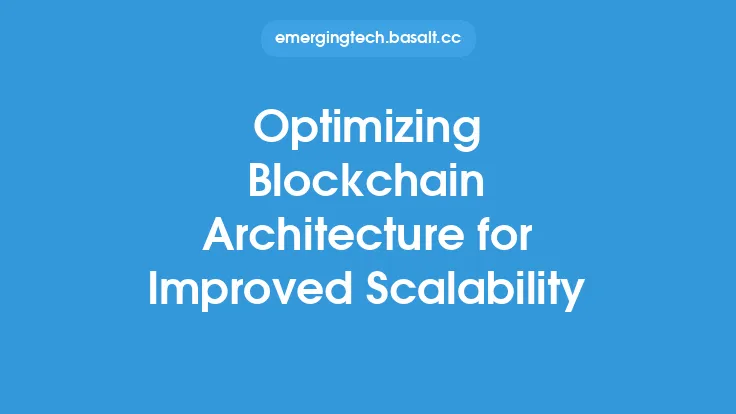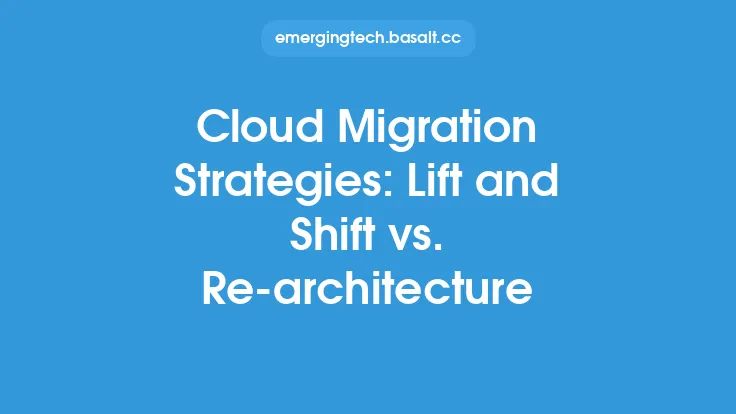The foundation of blockchain technology lies in its architecture, which is a complex system comprising various components that work together to enable secure, decentralized, and transparent data management. Understanding the components and design of blockchain architecture is essential for building and implementing blockchain-based systems. In this article, we will delve into the key components and design principles of blockchain architecture, exploring how they interact and contribute to the overall functionality of the blockchain network.
Introduction to Blockchain Components
A blockchain network consists of several key components, including nodes, transactions, blocks, chains, and consensus mechanisms. Each component plays a vital role in the functioning of the blockchain, and understanding their interactions is crucial for designing and implementing blockchain-based systems. Nodes are the foundation of the blockchain network, acting as the communication points for transmitting and verifying data. Transactions are the data packets that are transmitted across the network, containing information such as sender and recipient details, timestamps, and data payloads. Blocks are the data structures that store multiple transactions, and chains are the sequences of blocks that form the blockchain. Consensus mechanisms, such as proof-of-work or proof-of-stake, ensure that the nodes on the network agree on the state of the blockchain, preventing tampering and ensuring data integrity.
Blockchain Network Architecture
The blockchain network architecture refers to the overall design and organization of the blockchain system. It encompasses the communication protocols, data structures, and algorithms that enable the nodes to interact and maintain the integrity of the blockchain. The architecture of a blockchain network can be categorized into two main types: permissionless and permissioned. Permissionless blockchains, such as Bitcoin and Ethereum, allow anyone to join the network and participate in the consensus process. Permissioned blockchains, on the other hand, restrict access to authorized nodes, which are typically used in enterprise environments. The choice of architecture depends on the specific use case and requirements of the blockchain-based system.
Blockchain Data Structures
Blockchain data structures are the building blocks of the blockchain, providing a way to organize and store data in a secure and efficient manner. The most common data structures used in blockchain are hash tables, linked lists, and trees. Hash tables are used to store and retrieve data quickly, while linked lists are used to store transactions in a block. Trees, such as Merkle trees, are used to efficiently verify the integrity of data in the blockchain. Understanding the properties and trade-offs of these data structures is essential for designing and optimizing blockchain-based systems.
Consensus Mechanisms
Consensus mechanisms are critical components of blockchain architecture, enabling nodes to agree on the state of the blockchain and preventing tampering. The most common consensus mechanisms are proof-of-work (PoW), proof-of-stake (PoS), and delegated proof-of-stake (DPoS). PoW, used in Bitcoin, requires nodes to solve complex mathematical puzzles to validate transactions and create new blocks. PoS, used in Ethereum, requires nodes to "stake" their own cryptocurrency to validate transactions and create new blocks. DPoS, used in some altcoins, combines elements of PoW and PoS to achieve consensus. Each consensus mechanism has its strengths and weaknesses, and the choice of mechanism depends on the specific requirements of the blockchain-based system.
Blockchain Scalability and Performance
Blockchain scalability and performance are critical factors in the adoption and widespread use of blockchain technology. As the number of users and transactions increases, the blockchain network must be able to handle the increased load without compromising security or performance. Several techniques are used to improve scalability and performance, including sharding, off-chain transactions, and second-layer scaling solutions. Sharding involves dividing the blockchain into smaller, independent pieces, allowing for parallel processing and increased throughput. Off-chain transactions involve processing transactions outside of the main blockchain, reducing the load on the network. Second-layer scaling solutions, such as the Lightning Network, enable fast and secure transactions without the need for block confirmation.
Blockchain Security
Blockchain security is a critical aspect of blockchain architecture, ensuring the integrity and confidentiality of data stored on the blockchain. Several security measures are used to protect the blockchain, including encryption, digital signatures, and access control. Encryption ensures that data is protected from unauthorized access, while digital signatures ensure the authenticity and integrity of transactions. Access control mechanisms, such as multi-factor authentication and role-based access control, restrict access to authorized nodes and users. Additionally, regular security audits and penetration testing are essential for identifying and addressing potential vulnerabilities in the blockchain.
Blockchain Interoperability
Blockchain interoperability refers to the ability of different blockchain networks to communicate and exchange data with each other. Interoperability is essential for enabling the widespread adoption of blockchain technology, allowing different systems to work together seamlessly. Several techniques are used to achieve interoperability, including cross-chain transactions, atomic swaps, and blockchain bridges. Cross-chain transactions enable the transfer of assets between different blockchain networks, while atomic swaps enable the exchange of assets between different networks without the need for intermediaries. Blockchain bridges enable the transfer of data and assets between different networks, facilitating communication and collaboration between different blockchain-based systems.
Conclusion
In conclusion, blockchain architecture is a complex system comprising various components that work together to enable secure, decentralized, and transparent data management. Understanding the components and design principles of blockchain architecture is essential for building and implementing blockchain-based systems. By exploring the key components, data structures, consensus mechanisms, scalability and performance techniques, security measures, and interoperability techniques, developers and organizations can design and implement blockchain-based systems that meet their specific needs and requirements. As blockchain technology continues to evolve and mature, it is essential to stay up-to-date with the latest developments and advancements in blockchain architecture, ensuring that blockchain-based systems are secure, scalable, and interoperable.





